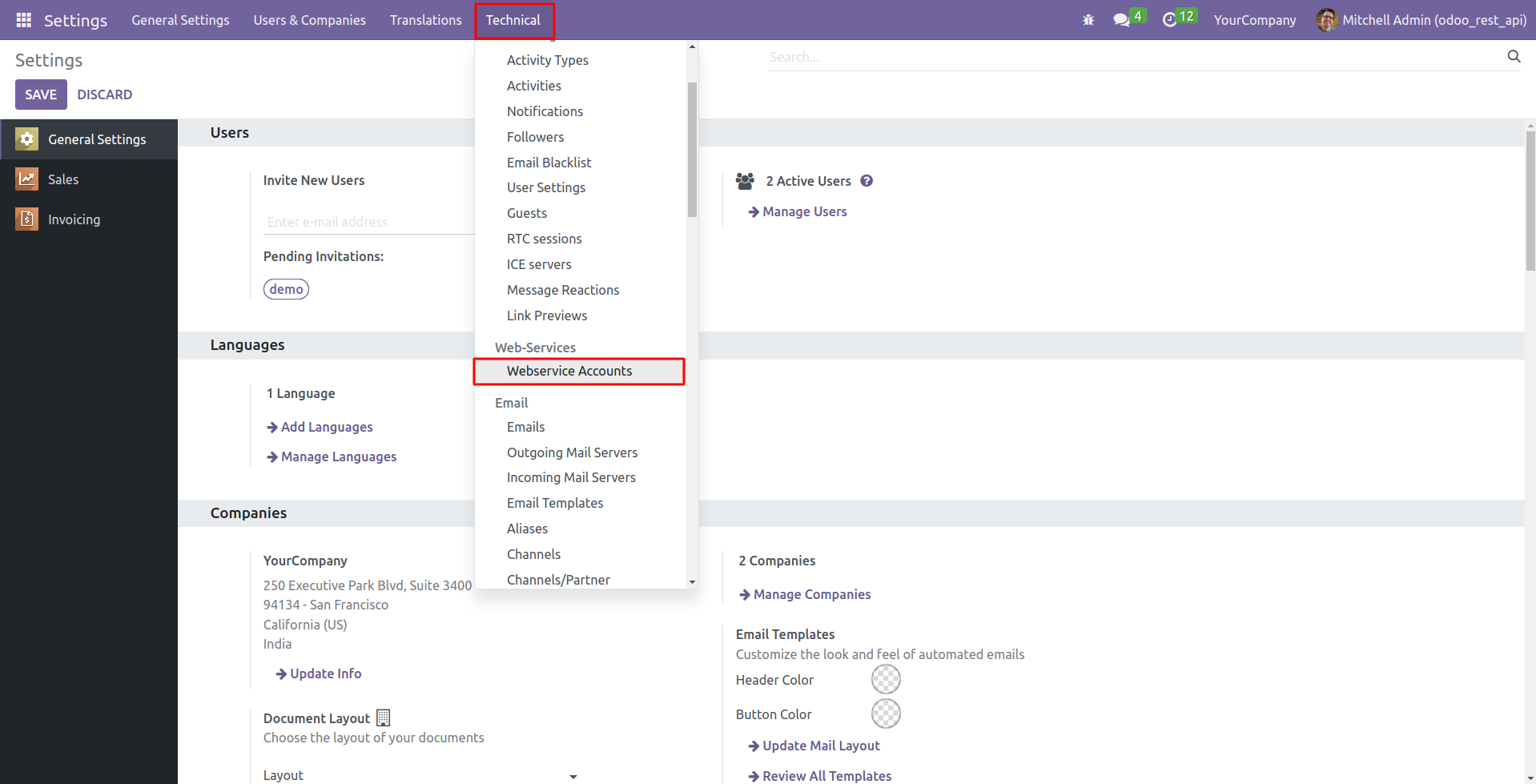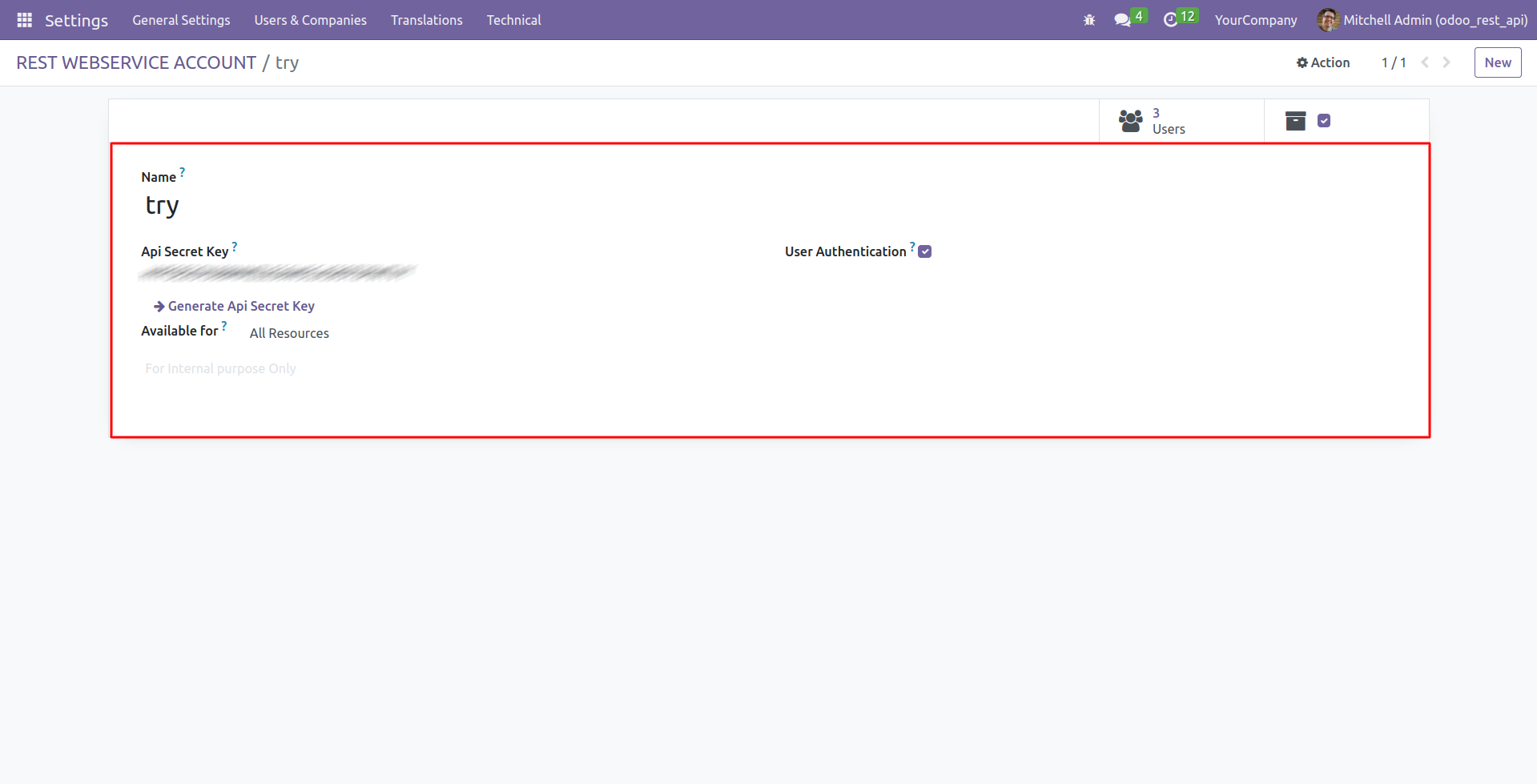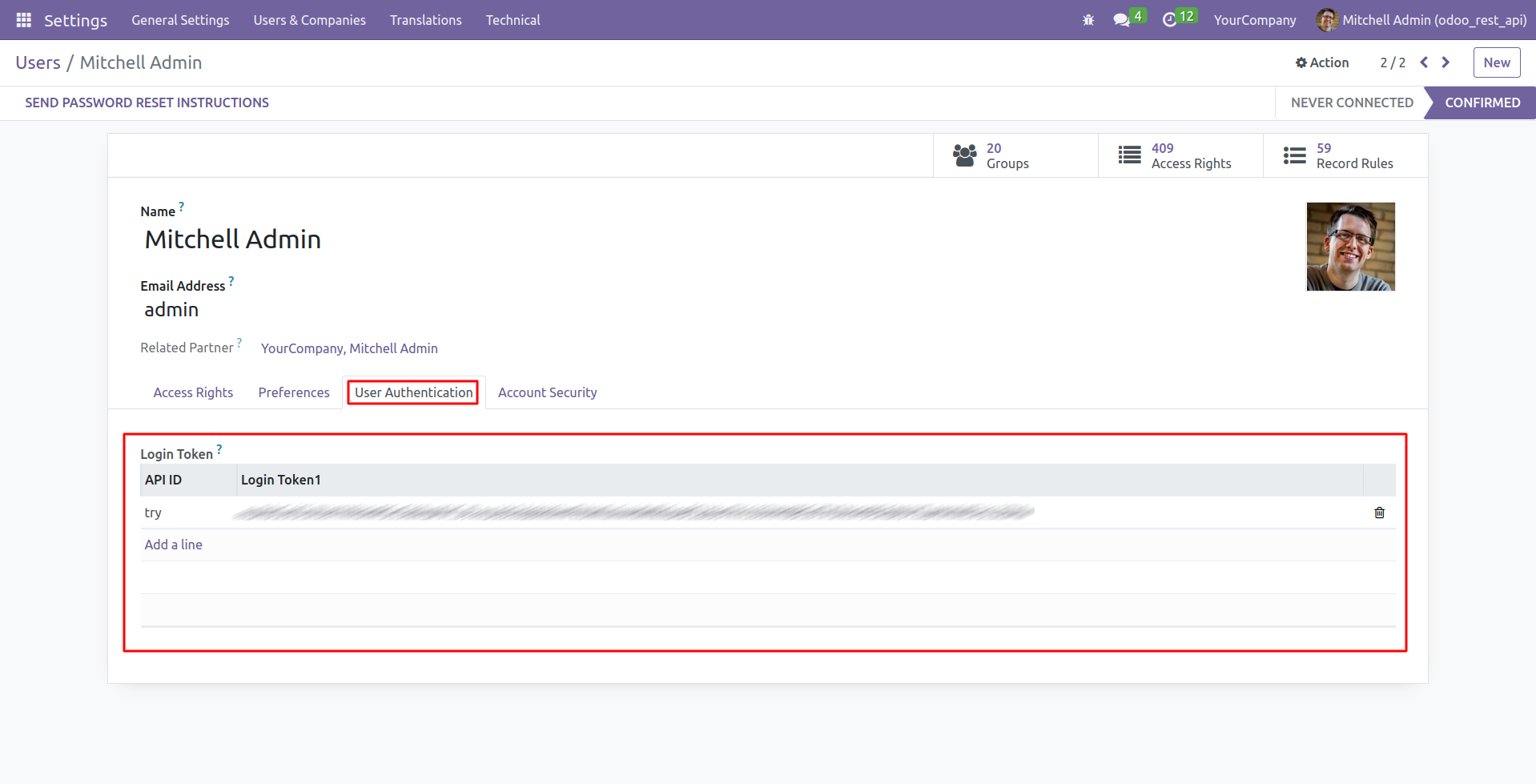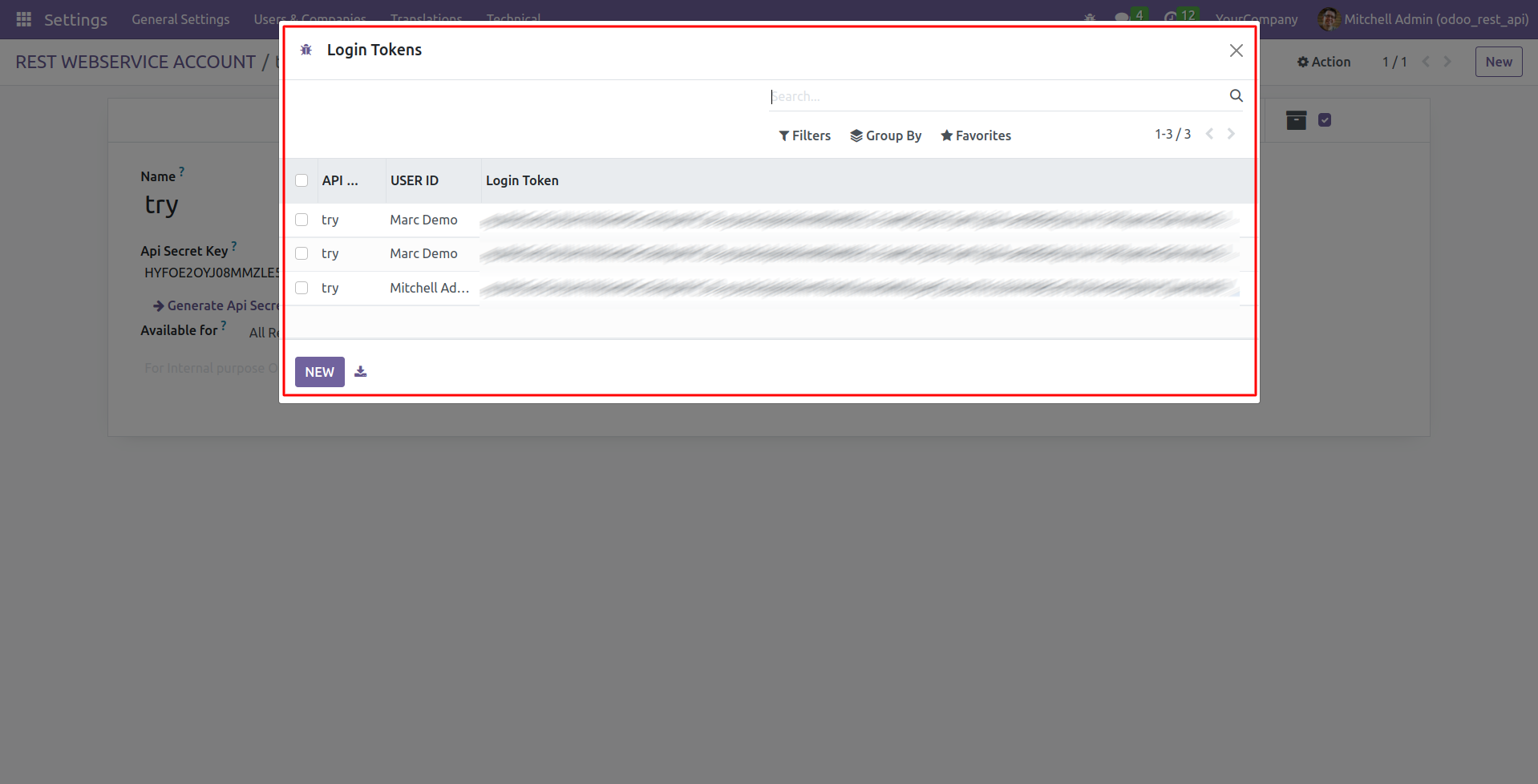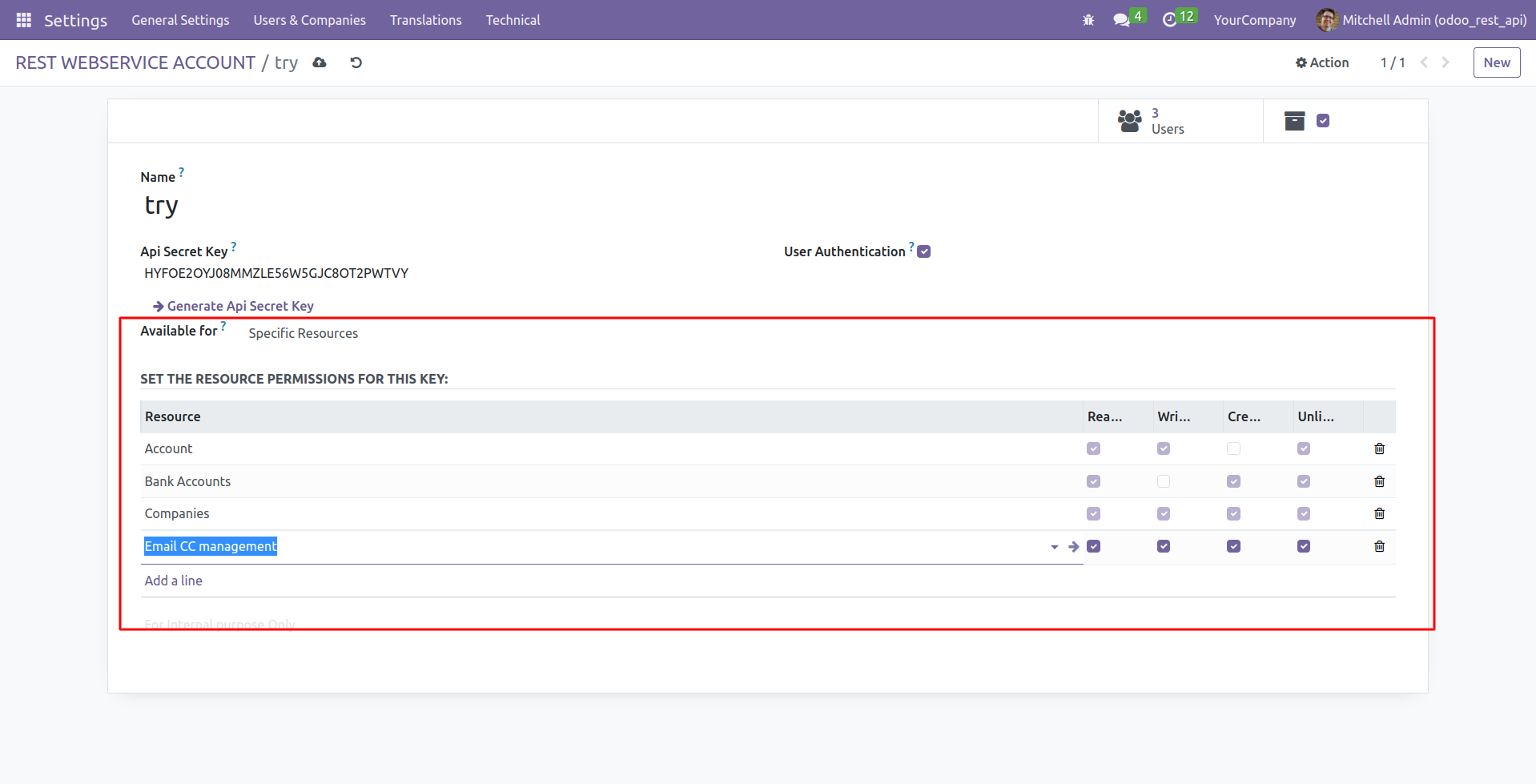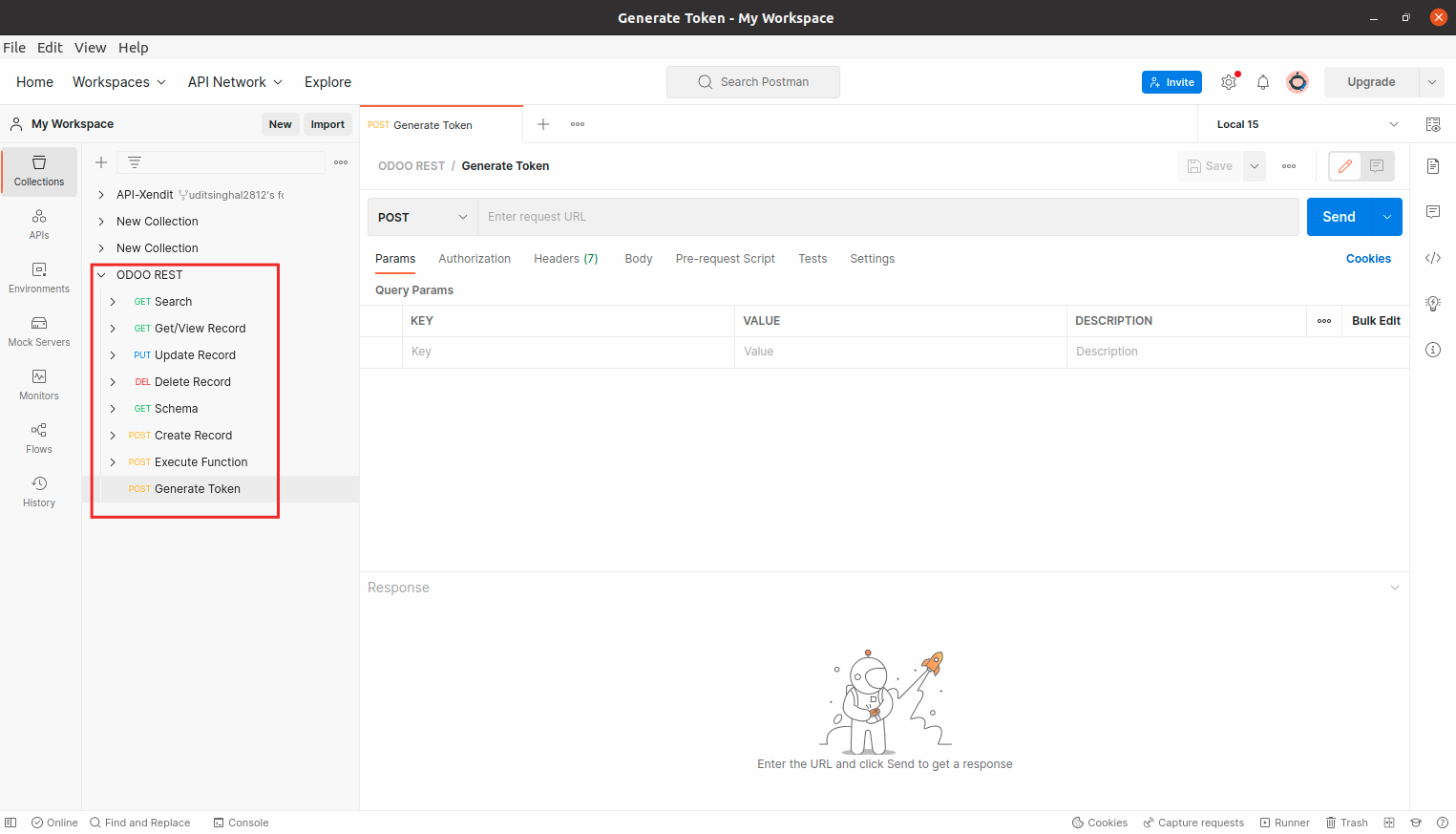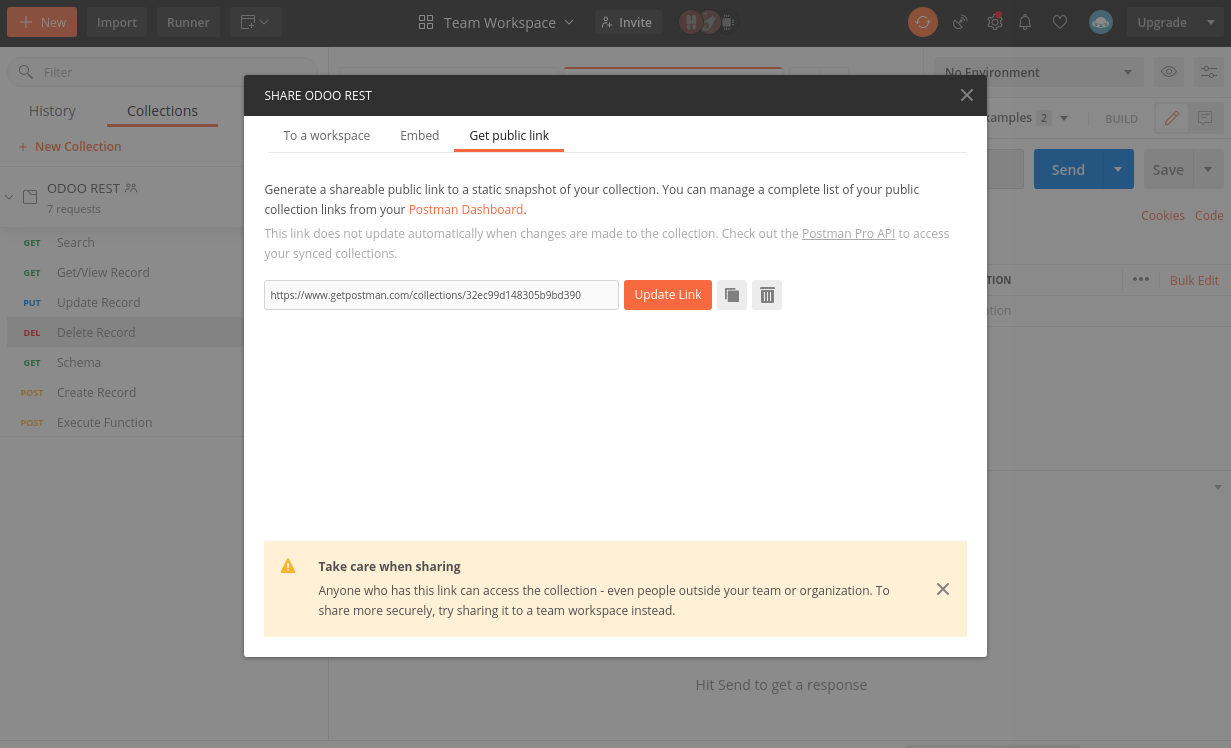- APPS
- Odoo Rest API 17.0
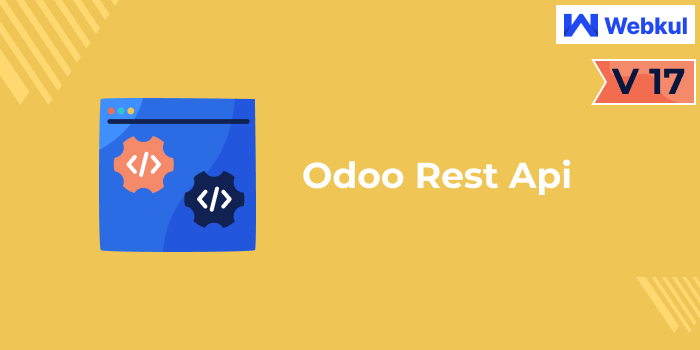
Odoo Rest API
| Technical name | odoo_rest |
| License | LGPL-3 |
| Website | https://store.webkul.com/Odoo-REST-API.html |
| Read description for |
Odoo REST API
Modify HTTP requests in Odoo!
A REST API refers to a Representational State Transfer Application Programming Interface. It’s
an architectural style for creating APIs that use HTTP requests to access and modify data in
Odoo. REST APIs are resource-oriented, stateless, cacheable, layered, and uniform interfaces.
The HTTP request lets you get, put, post, and delete data. This module allows you to access and
modify data using HTTP requests in Odoo. You can update a record from the database according to
your needs. The Odoo app permits you to send a request in JSON format and get the response in
JSON or XML (as per configuration).
Odoo REST API is a powerful tool that can automate tasks, integrate Odoo with other applications, customize instructions, update processes, etc. Here are some of the specific purposes of the Odoo REST API:
- REST API can help automate tasks like sending emails, creating invoices, and updating product prices. It aids in improving efficiency and saving time.
- You can get, put, post, and delete data using the API to make processing more efficient.
- It lets you alter or update specific records and can choose different types of functions for them (get, post, put, or delete).
The module can now authenticate a user for API creation. User Authentication helps to know who created the REST API, its purpose, and for which actions. It adds a validation layer to protect data and ensures that only authorized users can access the API resources. Additionally, it helps prevent data breaches, fraud, and other security risks.
- ScreenShots
- Detailed Features
- JSON representaion of Odoo Rest API
- Postman Collection
Detailed Features List
Below is the list of features Odoo Rest Api
Access or Modify Data Using HTTP Requests in Odoo
- The REST API module permits accessing and modifying data using HTTP requests.
- It allows you to create, fetch, update, and delete a record from the database by sending the appropriate request in JSON.
Response format for REST API in Odoo
- You can choose the response format as JSON or XML format (as needed).
- You can also request the schema of the table from the database.
Create API Keys to Access Endpoints
- The Odoo app allows you to create an API key to access the endpoints and set specific data access rights for different users.
- Same API key can be made available for different endpoint users.
Manage API keys and their Access Rights
- You can restrict specific access rights for different API keys.
- Also, you can view the access rights message in the endpoint response.
Improved Security with User Authentication
- User authentication ensures that only authorized users can access the API resources.
- It prevents data breaches, fraud, and other security risks.
Generating User Authentication Token
- You can create a user authentication token from the user profile in Odoo.
- Or you can provide encoded credentials in Postman to generate the authentication key. (NOTE: For user authentication, you must encode the login credentials from Base64 in the given format. {'login':'admin','password':'admin'})
JSON representaion of Odoo Rest API
Example 1: Search record from product.product
Request Type : GET
End Point : {{base_url}}/api/product.template/search?domain=[('id','in',[13,10,11,12,14])]&fields=['name','description','product_variant_ids']
Header : {"api_key":"xxxxxxxxxxxxxxxxxxxxxxxxxxxxxxxxx"}
{
"object_name": "product.template",
"responseCode": 200,
"fields": "['name','description','product_variant_ids']",
"model_id": 145,
"permisssions": {
"read": true,
"create": true,
"delete": true,
"write": true
},
"message": "Allowed all Models Permission: all",
"success": true,
"domain": "[('id','in',[13,10,11,12,14])]",
"data": [
{
"id": 11,
"name": "Bose Mini Bluetooth Speaker",
"description": false,
"product_variant_ids": [
{
"id": 14,
"name": "Bose Mini Bluetooth Speaker"
}
]
},
{
"id": 14,
"name": "iPad Mini",
"description": false,
"product_variant_ids": [
{
"id": 17,
"name": "iPad Mini"
}
]
},
{
"id": 10,
"name": "iPad Retina Display",
"description": false,
"product_variant_ids": [
{
"id": 10,
"name": "iPad Retina Display"
},
{
"id": 11,
"name": "iPad Retina Display"
},
{
"id": 12,
"name": "iPad Retina Display"
}
]
},
{
"id": 12,
"name": "Custom Computer (kit)",
"description": "Custom computer shipped in kit.",
"product_variant_ids": [
{
"id": 15,
"name": "Custom Computer (kit)"
}
]
},
{
"id": 13,
"name": "Parts Replacement",
"description": false,
"product_variant_ids": [
{
"id": 16,
"name": "Parts Replacement"
}
]
}
]
}
Example 2: Get schema for table product.product
Request Type : GET
End Point : {{base_url}}/api/res.lang/schema
Header : {"api_key":"xxxxxxxxxxxxxxxxxxxxxxxxxxxxxxxxx"}
{
"responseCode": 200,
"model_id": 73,
"permisssions": {
"read": true,
"create": true,
"delete": true,
"write": true
},
"message": "Allowed all Models Permission: all",
"object_name": "res.lang",
"success": true,
"data": [
{
"field_type": "char",
"label": "Name",
"readonly": false,
"required": true,
"field_name": "name"
},
{
"field_type": "char",
"label": "Locale Code",
"readonly": false,
"required": true,
"field_name": "code"
},
{
"field_type": "char",
"label": "ISO code",
"readonly": false,
"required": false,
"field_name": "iso_code"
},
{
"field_type": "boolean",
"label": "Translatable",
"readonly": false,
"required": false,
"field_name": "translatable"
},
{
"field_type": "boolean",
"label": "Active",
"readonly": false,
"required": false,
"field_name": "active"
},
{
"readonly": false,
"field_name": "direction",
"field_type": "selection",
"label": "Direction",
"required": true,
"selection": [
[
"ltr",
"Left-to-Right"
],
[
"rtl",
"Right-to-Left"
]
]
},
{
"field_type": "char",
"label": "Date Format",
"readonly": false,
"required": true,
"field_name": "date_format"
},
{
"field_type": "char",
"label": "Time Format",
"readonly": false,
"required": true,
"field_name": "time_format"
},
{
"field_type": "char",
"label": "Separator Format",
"readonly": false,
"required": true,
"field_name": "grouping"
},
{
"field_type": "char",
"label": "Decimal Separator",
"readonly": false,
"required": true,
"field_name": "decimal_point"
},
{
"field_type": "char",
"label": "Thousands Separator",
"readonly": false,
"required": false,
"field_name": "thousands_sep"
},
{
"field_type": "integer",
"label": "ID",
"readonly": true,
"required": false,
"field_name": "id"
},
{
"field_type": "char",
"label": "Display Name",
"readonly": true,
"required": false,
"field_name": "display_name"
},
{
"field_type": "many2one",
"label": "Created by",
"readonly": false,
"required": false,
"field_name": "create_uid"
},
{
"field_type": "datetime",
"label": "Created on",
"readonly": false,
"required": false,
"field_name": "create_date"
},
{
"field_type": "many2one",
"label": "Last Updated by",
"readonly": false,
"required": false,
"field_name": "write_uid"
},
{
"field_type": "datetime",
"label": "Last Updated on",
"readonly": false,
"required": false,
"field_name": "write_date"
},
{
"field_type": "datetime",
"label": "Last Modified on",
"readonly": true,
"required": false,
"field_name": "__last_update"
}
]
}
Example 3: Create a record of product.template
Request Type : POST
End Point : {{base_url}}/api/product.template/create
Header : {"api_key":"xxxxxxxxxxxxxxxxxxxxxxxxxxxxxxxxx"}
response : {
"responseCode": 200,
"model_id": 145,
"permisssions": {
"read": true,
"create": true,
"delete": true,
"write": true
},
"message": "Allowed all Models Permission: all",
"create_id": 75,
"object_name": "product.template",
"success": true
}
Example 4: Get a record of sale.order.line
Request Type :GET
End Point : {{base_url}}/api/sale.order.line/<int: record_id>
Header : {"api_key":"xxxxxxxxxxxxxxxxxxxxxxxxxxxxxxxxx"}
GET
{
"object_name": "sale.order.line",
"responseCode": 200,
"model_id": 241,
"record_id": 2,
"message": "Allowed all Models Permission: all",
"success": true,
"permisssions": {
"read": true,
"create": true,
"delete": true,
"write": true
},
"data": [
{
"sequence": 10,
"__last_update": "2017-10-04 11:28:01",
"is_downpayment": false,
"price_tax": 0,
"customer_lead": 0,
"create_uid": [
{
"id": 1,
"name": "Administrator"
}
],
"price_unit": 145,
"product_qty": 5,
"salesman_id": [
{
"id": 5,
"name": "Demo User"
}
],
"amt_invoiced": 0,
"id": 2,
"product_packaging": [],
"qty_delivered": 0,
"price_reduce_taxinc": 145,
"price_reduce": 145,
"price_total": 725,
"move_ids": [],
"layout_category_id": [],
"route_id": [],
"create_date": "2017-10-04 11:28:01",
"currency_id": [
{
"id": 1,
"name": "EUR"
}
],
"product_id": [
{
"id": 5,
"name": "Datacard"
}
],
"write_date": "2017-10-04 11:28:01",
"warning_stock": false,
"amt_to_invoice": 725,
"price_reduce_taxexcl": 145,
"write_uid": [
{
"id": 1,
"name": "Administrator"
}
],
"company_id": [
{
"id": 1,
"name": "YourCompany"
}
],
"name": "Pen drive, 16GB",
"product_uom_qty": 5,
"qty_to_invoice": 0,
"price_subtotal": 725,
"is_delivery": false,
"invoice_status": "no",
"product_uom": [
{
"id": 1,
"name": "Unit(s)"
}
],
"qty_invoiced": 0,
"state": "draft",
"order_id": [
{
"id": 1,
"name": "SO001"
}
],
"display_name": "Pen drive, 16GB",
"order_partner_id": [
{
"id": 9,
"name": "Agrolait"
}
],
"product_image":""
"layout_category_sequence": 0,
"discount": 0,
"qty_delivered_updateable": false
}
]
}
Example 5: Update a record of product.template
Type : PUT
End Point : {{base_url}}/api/product.template/<int: record_id>
Header : {"api_key":"xxxxxxxxxxxxxxxxxxxxxxxxxxxxxxxxx"}
PUT Body:
{
"name" : "test product"
}
response : {
"responseCode": 200,
"model_id": 145,
"permisssions": {
"read": true,
"create": true,
"delete": true,
"write": true
},
"message": "Allowed all Models Permission: all",
"create_id": 75,
"object_name": "product.template",
"success": true
}
Example 6: Delete a record of product.template
Request Type : DELETE
End Point : {{base_url}}/api/product.template/<int: record_id>
Header : {"api_key":"xxxxxxxxxxxxxxxxxxxxxxxxxxxxxxxxx"}
response : {
"responseCode": 200,
"model_id": 145,
"permisssions": {
"read": true,
"create": true,
"delete": true,
"write": true
},
"message": "Allowed all Models Permission: all",
"object_name": "product.template",
"success": true
}
Example 7: Trigger your odoo actions.
Request Type : POST
End Point : {{base_url}}/api/res.partner/execute_kw
Header : {"api_key":"xxxxxxxxxxxxxxxxxxxxxxxxxxxxxxxxx"}
Body : {"method":"name_get","args":[[2]],"kw":{}}
response : {
"model_id": 74,
"success": true,
"message": "Method Successfully Called",
"result": [
[
2,
"OdooBot"
]
],
"responseCode": 200,
"permisssions": {
"read": true,
"write": true,
"delete": true,
"create": true
},
"object_name": "res.partner"
}
Example 8: Generate Login Token.
Request Type : POST
End Point : {{base_url}}/api/generate_token
Header : {"api_key":"xxxxxxxxxxxxxxxxxxxxxxxxxxxxxxxxx","login":"xxxxxxxxxxxxxxxxxxxxxxxxxxxxxxxxxx"}
{
"success": true,
"message": "Token Successfully Generated",
"responseCode": 200,
"user_id": 2,
"Token": "eyJhbGciOiJIUzI1NiIsInR5cCI6IkpXVCJ9.eyJsb2dpbiI..........."
}
Example 9: Search record from product.product with user authentication
Request Type : GET
End Point : {{base_url}}/api/product.template/search?domain=[('id','in',[13,10,11,12,14])]&fields=['name','description','product_variant_ids']
Header : {"api_key":"xxxxxxxxxxxxxxxxxxxxxxxxxxxxxxxxx","token":"xxxxxxxxxxxxxxxxxxxxxxxxxxxxxx"}
{
"success": true,
"message": "Allowed all Models Permission: all",
"responseCode": 200,
"domain": "[('id','in',[13,10,11,12,14])]",
"fields": "['name','description','product_variant_ids']",
"object_name": "product.template",
"user_id": 2,
"permisssions": {
"read": true,
"write": true,
"delete": true,
"create": true
},
"model_id": 381,
"data": [
{
"name": "Corner Desk Right Sit",
"description": false,
"product_variant_ids": [
{
"id": 16,
"name": "Corner Desk Right Sit"
}
],
"id": 10
},
{
"name": "Large Cabinet",
"description": false,
"product_variant_ids": [
{
"id": 17,
"name": "Large Cabinet"
}
],
"id": 11
},
{
"name": "Large Desk",
"description": false,
"product_variant_ids": [
{
"id": 19,
"name": "Large Desk"
}
],
"id": 13
},
{
"name": "Pedal Bin",
"description": false,
"product_variant_ids": [
{
"id": 20,
"name": "Pedal Bin"
}
],
"id": 14
},
{
"name": "Storage Box",
"description": false,
"product_variant_ids": [
{
"id": 18,
"name": "Storage Box"
}
],
"id": 12
}
]
}
Support
Get Immediate support for any of your query
You will get 90 days free support for any doubt, queries, and bug fixing (excluding data recovery) or any type of issue related to this module.

Write To Us At
[email protected]For any help and doubt or issue regarding the module, Drop a mail to our technical team.
Raise A Ticket At:
https://webkul.uvdesk.com/en/customer/create-ticket/For support or to request customization, Create A Support Ticket by copying the link and opening it in a new tab.
This is an unofficial translation of the GNU Lesser General Public License into Vietnamese. It was not published by the Free Software Foundation,
and does not legally state the distribution terms for software that uses the GNU LGPL - only the original English text of the GNU LGPL does
that. However, we hope that this translation will help language speakers understand the GNU LGPL better.
GNU LESSER GENERAL PUBLIC LICENSE
Version 3, 29 June
2007
Copyright (C) 2007 Free Software Foundation, Inc. <https://fsf.org/>
Everyone is permitted to copy and distribute verbatim copies of this license document, but changing it is not allowed.
This version of the GNU Lesser General Public License incorporates the terms and conditions of version 3 of the GNU General Public License,
supplemented by the additional permissions listed below.
0. Additional Definitions.
As used herein,"this License" refers to version 3 of the GNU Lesser General Public License, and the "GNU GPL" refers to version 3 of
the GNU "General" Public License.
"The Library" refers to a covered work governed by this License, other than an Application or a Combined Work as defined below.
An "Application" is any work that makes use of an interface provided by the Library, but which is not otherwise based on the Library.
Defining a subclass of a class defined by the Library is deemed a mode of using an interface provided by the Library.
A "Combined Work" is a work produced by combining or linking an Application with the Library. The particular version of the Library
with which the Combined Work was made is also called the "Linked Version".
The "Minimal Corresponding Source" for a Combined Work means the Corresponding Source for the Combined Work, excluding any source code
for portions of the Combined Work that, considered in isolation, are based on the Application, and not on the Linked Version.
The "Corresponding Application Code" for a Combined Work means the object code and/or source code for the Application, including any data
and utility programs needed for reproducing the Combined Work from the Application, but excluding the System Libraries of the Combined Work.
1. Exception to Section 3 of the GNU GPL.
You may convey a covered work under sections 3 and 4 of this License without being bound by section 3 of the GNU GPL.
2. Conveying Modified Versions.
If you modify a copy of the Library, and, in your modifications, a facility refers to a function or data to be supplied by an Application that
uses the facility (other than as an argument passed when the facility is invoked), then you may convey a copy of the modified version:
a) under this License, provided that you make a good faith effort to ensure that, in the event an Application does not supply the function or data, the facility still
operates, and performs whatever part of its purpose remains meaningful, or
b) under the GNU GPL, with none of the additional permissions of this License applicable to that copy.
3. Object Code Incorporating Material from Library Header Files.
The object code form of an Application may incorporate material from a header file that is part of the Library. You may convey such
object code under terms of your choice, provided that, if the incorporated material is not limited to numerical parameters, data structure
layouts and accessors, or small macros, inline functions and templates (ten or fewer lines in length), you do both of the following:
a) Give prominent notice with each copy of the object code that the Library is used in it and that the Library and its use are covered by this License.
b) Accompany the object code with a copy of the GNU GPL and this license document.
4. Combined Works.
You may convey a Combined Work under terms of your choice that, taken together, effectively do not restrict modification of the portions of the
Library contained in the Combined Work and reverse engineering for debugging such modifications, if you also do each of the following:
a) Give prominent notice with each copy of the Combined Work that the Library is used in it and that the Library and its use are covered by this License.
b) Accompany the Combined Work with a copy of the GNU GPL and this license document.
c) For a Combined Work that displays copyright notices during execution, include the copyright notice for the Library among these notices,
as well as a reference directing the user to the copies of the GNU GPL and this license document.
d) Do one of the following:
0) Convey the Minimal Corresponding Source under the terms of this License, and the Corresponding Application Code in a form suitable for, and
under terms that permit, the user to recombine or relink the Application with a modified version of the Linked Version to produce a modified
Combined Work, in the manner specified by section 6 of the GNU GPL for conveying Corresponding Source.
1) Use a suitable shared library mechanism for linking with the Library. A suitable mechanism is one that (a) uses at run time a copy of the
Library already present on the user's computer system, and (b) will operate properly with a modified version of the Library
that is interface-compatible with the Linked Version.
e) Provide Installation Information, but only if you would otherwise be required to provide such information under section 6 of the
GNU GPL, and only to the extent that such information is necessary to install and execute a modified version of the Combined Work produced by
recombining or relinking the Application with a modified version of the Linked Version. (If you use option 4d0, the Installation Information
must accompany the Minimal Corresponding Source and Corresponding Application Code. If you use option 4d1, you must provide the Installation
Information in the manner specified by section 6 of the GNU GPL for conveying Corresponding Source.)
5. Combined Libraries.
You may place library facilities that are a work based on the Library side by side in a single library together with other library facilities that
are not Applications and are not covered by this License, and convey such a combined library under terms of your choice, if you do both of
the following:
a)Accompany the combined library with a copy of the same work based on the Library, uncombined with any other library facilities,
conveyed under the terms of this License.
b) Give prominent notice with the combined library that part of it is a work based on the Library, and explaining where to find the accompanying
uncombined form of the same work.
6. Revised Versions of the GNU Lesser General Public License.
The Free Software Foundation may publish revised and/or new versions of the GNU Lesser General Public License from time to time. Such new
versions will be similar in spirit to the present version, but may differ in detail to address new problems or concerns.
Each version is given a distinguishing version number. If the Library as you received it specifies that a certain numbered
version of the GNU Lesser General Public License "or any later version" applies to it, you have the option of following the terms and
conditions either of that published version or of any later version published by the Free Software Foundation. If the Library as you
received it does not specify a version number of the GNU Lesser General Public License, you may choose any version of the GNU Lesser
General Public License ever published by the Free Software Foundation.
If the Library as you received it specifies that a proxy can decide whether future versions of the GNU Lesser General Public License shall
apply, that proxy's public statement of acceptance of any version is permanent authorization for you to choose that version for the Library.
